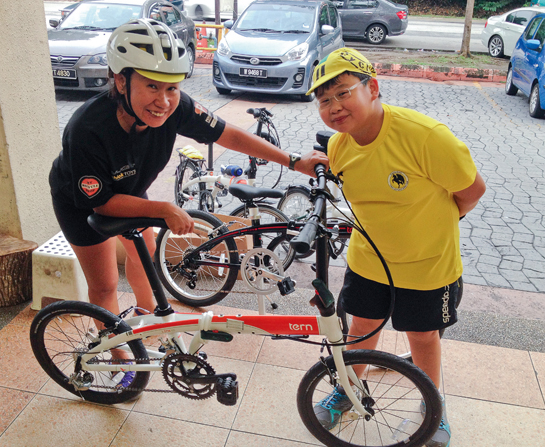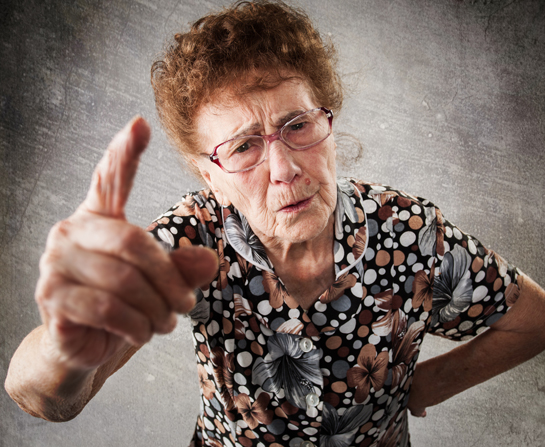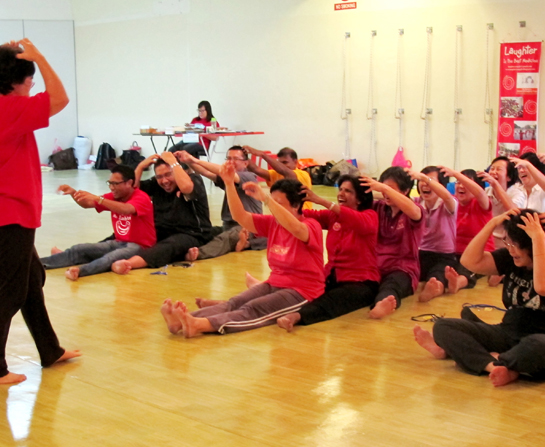The Artistry of Doctors: These are Her Words
May 1, 2022 Return
On the day I meet Dr Sundari Ampikaipakan, a consultant respiratory physician, at her clinic at Pantai Hospital Kuala Lumpur, it is already quite late into the evening and I have been told beforehand that she has had quite a long day. None of the day’s ups and downs show on her cheerful demeanour, however, as she breezes into the clinic and gives me a bubbly greeting.
She has a good reason to feel on top of the world. Just a few days before, on May 28, she saw the launch of her poetry book I Forget to Breathe at the revived neighbourhood of The Row. An appropriate location, as Dr Sundari talked about, signed and sold copies of her first published effort surrounded by cafes, bars and the atmosphere of bohemian rhapsody. All for a good cause, too, as proceeds of the book would be used to fund the establishment of Dr Sundari’s other pride and joy: her non-profit advocacy and educational group, Asthma Malaysia.
I Forget to Breathe
Grow old with me
In slippers and robes
Hot chocolate for you and whiskey for me
Excerpt from Forever and a Day
I read I Forget to Breathe before I catch up with Dr Sundari. It is a slim book that can be easily fitted into one’s briefcase or handbag, which Dr Sundari points out with a laugh, is a deliberate choice of design. You can bring this book easily to anywhere you go, so that you can read a poem or two when you have some time for yourself.
Reading Dr Sundari’s poetry, I am struck by the range of emotions evoked by the words and phrases laid down on the pages. There is the breathless anticipation of a happily ever after, and there is melancholy associated with the uncertainties one faces in a relationship. Odes to romance gracefully transition to laments of regrets, before hope ignites and one looks forward to the future with head held high and a full heart. The book also contains illustrations by artist and illustrator Mr Yeoh Yi-Piao, to complement and enhance the poems.
I ask her whether the title of the book is related in any way to Asthma Malaysia. “I guess the title can be linked to the fact that I am a chest physician,” she says, “but breathing is an important part of life, and it is linked to so many emotions. When we are happy, we catch our breath, and when we grieve, we can’t breathe. And the poems are about the moments of life that take our breath away.”
All of which is clearly reflected in the book. “The poets that I love are Tagore, Yates, Browning, Shelley, Byron…” she tells me, and laughs when I point out that these are all very different poets with disparate styles. She is inspired by their expressive poems, regardless of genre.
“I’ve always found that poetry is a balm for the soul,” Dr Sundari tells me. It allows her to express her emotions, fears and hopes through the rhythm and arrangement of words. “Poetry is special in that, while you may have certain feelings that you pour into your work, the reader has her own interpretation of what she reads – and this interpretation may be completely different from yours.”
The response may even change with time, as life’s experiences can sometimes colour how one relates to a poem. “That’s the beauty of poetry,” she says.
Meeting readers and discovering their responses to her poetry is a significant part of the joy of being a poet, Dr Sundari tells me. Some of her patients as well as their family members – and a few random strangers now and then – have read I Forget to Breathe and, upon meeting her either at her clinic or the book launch, shared with her their thoughts. Not all of them are dedicated fans of poetry, and yet, they still reacted and responded. “There was this woman who, when she met me, told me, ‘You know life!’” she tells me. Those three simple words actually mean a lot to her, a poet who hopes to capture the nuances of life in her words.
Writing Love, Simply yet Complicatedly
Like lanterns of hope
It brings me to you once again
Across the oceans where I belong
Excerpt from Harbour Lights.
If Dr Sundari’s family name may seem familiar to you, that is because she is the sister of Umapagan Ampikaipakan, the BFM Radio DJ who unabashedly professes on air his democratic love for both literature and popular culture. A love for literature runs in the family, it seems, as Dr Sundari is also a lifelong lover of the written word.
“I could spend hours just browsing a bookstore,” she confesses. “I like picking up different genres, whether it is fiction or non-fiction, but poetry always has a special place in my heart.”
Her love for poetry began when she was a young girl about five. Her grandmother would read poems such as Robert Louis Stevenson’s My Shadow and William Wordsworth’s I Wandered Lonely as a Cloud with her. “I remembered going to the Wordsworth House and Garden when I was seven (I lived in the UK then) and buying a book of Wordsworth’s poems.”
Eventually she began to write her own poems, but that took a backseat during her medical school days.
The muse cannot be denied, however. “About a year ago, I just started penning down my thoughts and ideas – just in little phrases – and they just came together to become poems,” she shares. All it took for the words to flow was a memory, or a thought, or a conversation with someone.
It never occurred to her to publish her works, however, until she began working to found Asthma Malaysia.
Helping Malaysia Breathe
The morning is here
Shadowing the moon
Waiting to start anew
Excerpt from Morning
“It has always been my dream to educate Malaysians about asthma, particularly parents and sufferers of asthma, and why it is important to treat asthma properly,” says Dr Sundari.
Asthma is an important subject because in Malaysia, it is a leading cause of hospital admissions as well as loss of work and school hours. Without proper care, it can be dangerous, even fatal. It frustrates Dr Sundari that so many of these problems and even deaths could have been avoided if the patients had managed their asthma properly. Compliance is poor, there are many misconceptions that still persist, and there are even patients who have a poor understanding of how to use their inhalers properly.
Hence, Dr Sundari sees a need for a group such as Asthma Malaysia. She hopes to establish it as an important advocacy and education group, and in time, also a research and outreach group in close cooperation with organizations such as the Lung Foundation of Malaysia.
Dr Sundari has always received favourable feedback for her poetry, so she began contemplating the possibility of marrying her two passions – poetry and medicine – for a good cause. She sent her collection of poems to two close friends in UK and told them to give her their feedback. “I told them to be brutally honest and tell me if I would end up making a fool of myself in public!” she says with a laugh.
They told her to go for it, and she then picked out 36 poems to be published. She approached her childhood friend Yi-Piao to get the book illustrated. “I told him to just read the poems and draw what he felt would be appropriate with each one. No, I never told him what to draw!”
I Forget to Breathe is entirely self-published, and Dr Sundari has plans to make it available in digital format on Amazon and other online book vendors in the near future.
“This book may be best appreciated by adults,” she says, “but people of different ages may have different reactions to it. It will resonate with them differently. As an optimistic writer, I’d like to think that many will find this book containing a lot of hope!”
I Forget to Breathe is available for RM40. All proceeds will go to the development of Asthma Malaysia. To get your copy, please contact Asthma Malaysia at:
Facebook: fb.com/asthma.MY
Twitter: @asthmamalaysia
Email: asthma.mas@gmail.com
If you like this article, do subscribe here.
























